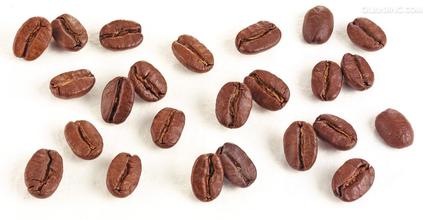Introduction to the characteristics and flavor description of manor practices during Kenyan coffee picking season
Introduction to the characteristics and flavor description of manor practices during Kenyan coffee picking season
The Kenyan government takes the coffee industry very seriously, where it is illegal to cut down or destroy coffee trees. Kenyan coffee buyers are world-class high-quality coffee buyers, and no other country can grow, produce and sell coffee on a continuous basis like Kenya. All coffee beans are first acquired by the Kenya Coffee Commission (CoffeeBoardofKenya, CBK), where they are identified, graded, and then sold at weekly auctions, where they are no longer graded. The Kenya Coffee Commission only acts as an agent to collect coffee samples and distribute them to buyers so that they can determine the price and quality. The auction in Nairobi is for private exporters, and the Kenya Coffee Commission pays growers a price below the market price. The best coffee grade is bean berry coffee (PB), followed by AA++, AA+, AA, AB and so on. The fine coffee is shiny, delicious and slightly alcoholic. Auctions are also organized to meet the needs of dispatchers. This kind of auction usually has a small auction volume (3-6 tons each), with samples with the grower's logo for buyers to enjoy. After the auction, the exporters pack according to different flavors, different qualities and the quantity required by the blenders. This provides a great deal of flexibility for dispatchers.
Most Arabica coffee beans mature from June to August and Robasta coffee beans from September to October. Therefore, although in some countries where the dry and wet seasons are not obvious, such as Colombia and Kenya, there are two flowering periods a year, that is, two harvests, but strictly speaking, there is only one harvest a year.
The harvest time of coffee varies from region to region. Regions north of the equator (such as Ethiopia and Central America) are generally harvested from September to November. South of the equator, such as Brazil and Zimbabwe, although the harvest can last until August, the main one is in April or May. Countries in the equatorial region, such as Uganda and Colombia, can harvest all year round, especially those plantations that can make good use of different elevations. As a result, there may be new coffee beans for most of the year.
Coffee fruits should be harvested immediately, and it is not easy to harvest coffee fruits at different ripening stages on the same tree. Generally speaking, it takes as long as 4-5 months to receive a full harvest from the initial harvest. If ripe and immature fruits are harvested at the same time, the quality of coffee will be reduced. Therefore, high-quality coffee is picked one by one by hand to maintain the perfect taste of the coffee.

Important Notice :
前街咖啡 FrontStreet Coffee has moved to new addredd:
FrontStreet Coffee Address: 315,Donghua East Road,GuangZhou
Tel:020 38364473
- Prev

Description of flavor of Yunnan coffee beans introduction of baking degree of varieties in manor production area
Yunnan coffee bean flavor description taste manor produce variety baking degree introduction Hawaii to Hawaii sightseeing, in addition to beautiful beaches, do not forget Hawaiian coffee beans-Kona. The taste is sweet with the sour taste of wine, which is very special. The most traditional and famous coffee in Hawaii. However, due to the low production here, the cost is surprisingly high, coupled with the United States and other places
- Next

Description of taste and flavor of Panamanian coffee beans introduction to the regional characteristics of grinding scale varieties
The taste and flavor of Panamanian coffee beans describe the characteristics of grinding scale varieties. Coffee is grown from 1670 meters to 1850 meters above sea level. It is one of the two highest coffee estates in Panama (the other estate with these elevations should be Carmen Manor in the Vulcan Valley). At such a high altitude, the low temperature delays the ripening period of coffee berries.
Related
- Detailed explanation of Jadeite planting Land in Panamanian Jadeite Manor introduction to the grading system of Jadeite competitive bidding, Red bid, Green bid and Rose Summer
- Story of Coffee planting in Brenka region of Costa Rica Stonehenge Manor anaerobic heavy honey treatment of flavor mouth
- What's on the barrel of Blue Mountain Coffee beans?
- Can American coffee also pull flowers? How to use hot American style to pull out a good-looking pattern?
- Can you make a cold extract with coffee beans? What is the right proportion for cold-extracted coffee formula?
- Indonesian PWN Gold Mandrine Coffee Origin Features Flavor How to Chong? Mandolin coffee is American.
- A brief introduction to the flavor characteristics of Brazilian yellow bourbon coffee beans
- What is the effect of different water quality on the flavor of cold-extracted coffee? What kind of water is best for brewing coffee?
- Why do you think of Rose Summer whenever you mention Panamanian coffee?
- Introduction to the characteristics of authentic blue mountain coffee bean producing areas? What is the CIB Coffee Authority in Jamaica?

